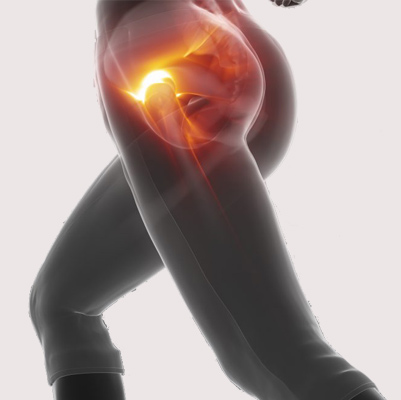Frozen shoulder Pain
Frozen Shoulder – Overview (Spaks Homeopathy)
Frozen shoulder, also known as Adhesive Capsulitis, is a condition marked by pain and stiffness in the shoulder joint. The problem usually starts gradually, worsens over time, and then slowly improves. In most cases, the entire cycle may last from 1 to 3 years if left untreated.
The shoulder joint is formed by three bones – the upper arm bone (humerus), the shoulder blade (scapula), and the collarbone (clavicle). A capsule of connective tissue surrounds this joint. In frozen shoulder, this capsule becomes thickened and tight, restricting movement.
Causes of Frozen Shoulder
-
Prolonged immobility of the shoulder (after injury, surgery, or illness)
-
Diabetes (common associated condition)
-
Hormonal imbalances or thyroid disorders
-
Shoulder inflammation or chronic arthritis
-
Aging (more common in people between 40–60 years)
-
Unknown causes in some cases (idiopathic)
Symptoms of Frozen Shoulder
Frozen shoulder usually develops gradually in three stages:
-
Freezing Stage
-
Gradual onset of shoulder pain
-
Movement becomes increasingly painful
-
Range of motion starts to decline
-
-
Frozen Stage
-
Pain may decrease, but stiffness worsens
-
Shoulder movements become very limited
-
Difficulty in daily activities (dressing, lifting, combing hair)
-
-
Thawing Stage
-
Stiffness slowly improves
-
Gradual recovery of shoulder movement
-
Pain diminishes over time
-
Effects / Complications
-
Long-term restriction in shoulder mobility
-
Difficulty in performing daily activities
-
Sleep disturbances due to pain
-
Muscle weakness from reduced movement
-
Risk of recurrence in the other shoulder
Homeopathic Treatment for Frozen Shoulder (Spaks Homeopathy)
Homeopathy helps by relieving pain, reducing stiffness, and restoring shoulder movement naturally. Commonly used remedies include:
-
Ferrum Metallicum – for stiffness and weakness in shoulder muscles
-
Rhus Toxicodendron – for pain and stiffness that improve with movement
-
Bryonia Alba – for intense pain, worse on slightest movement
-
Sanguinaria Canadensis – for right-sided frozen shoulder with shooting pain
-
Ledum Palustre – for pain and stiffness extending down the arm
Note: Medicines should be taken under the guidance of a qualified homeopathic physician for best results.
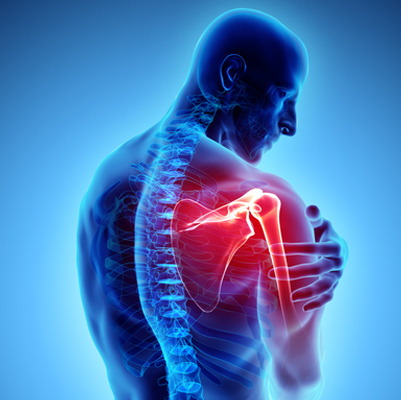
Ganglion cyst
Ganglion Cysts – Overview (Spaks Homeopathy)
Ganglion cysts are noncancerous lumps that most commonly develop along the tendons or joints of the wrists and hands. They can also appear on the ankles and feet, or less frequently near other joints.
These cysts are usually round or oval and filled with a jelly-like fluid. Their size may vary – from as small as a pea to about 2.5 cm (1 inch) in diameter. Ganglion cysts may remain painless, but if they press on nearby nerves, they can cause pain, tingling, or weakness. In some cases, the cyst may interfere with normal joint movement.
Causes of Ganglion Cysts
-
Exact cause is unknown
-
Repeated stress or overuse of joints
-
Injury or irritation of joint tissues
-
Degeneration of joint capsule or tendon sheath
-
More common in women and in younger adults (20–40 years)
Symptoms of Ganglion Cysts
-
Location: Commonly on wrists, hands, ankles, and feet
-
Shape & Size: Round or oval; can be very small or up to 2.5 cm in diameter
-
Fluctuating Size: May enlarge with repetitive joint use and shrink during rest
-
Pain: Usually painless, but can cause discomfort if pressing on a nerve
-
Neurological Signs: Tingling, numbness, or muscle weakness when nerves are compressed
-
Mobility Issues: Restriction of movement if located near active joints
Effects / Complications
-
Cosmetic concern due to visible swelling
-
Pain or discomfort during movement
-
Nerve compression leading to tingling or weakness
-
Reduced joint flexibility
-
Recurrent cysts after treatment in some cases
Homeopathic Treatment for Ganglion Cysts (Spaks Homeopathy)
Homeopathy aims to reduce cyst size, relieve pressure on nerves, and prevent recurrence by correcting the underlying imbalance. Commonly used remedies include:
-
Ruta Graveolens – for ganglion cysts on wrists or tendons due to overuse or injury
-
Calcarea Fluorica – for hard, nodular swellings on joints and tendons
-
Silicea – for cysts that recur or tend to suppurate slowly
-
Benzoic Acid – for cysts associated with joint stiffness and gouty tendencies
-
Lycopodium – for small cystic swellings with digestive weakness
Note: Remedy selection depends on individual symptoms. Always consult a qualified homeopathic physician before treatment.
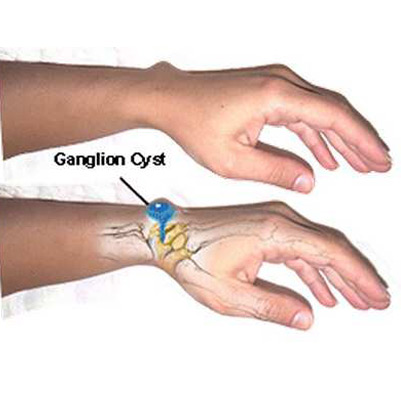
Gonococcal Arthritis
Gonococcal Arthritis – Overview
Gonococcal Arthritis is a rare complication of the sexually transmitted infection (STI) gonorrhea, caused by the bacteria Neisseria gonorrhoeae.
This condition occurs when the bacteria spread through the bloodstream and reach the joints, leading to painful inflammation.
Although gonorrhea is very common, especially among teenagers and young adults, many cases are asymptomatic (show no symptoms). Because of this, the infection may remain untreated and later result in complications like arthritis.
Gonococcal arthritis usually affects the:
-
Ankles
-
Knees
-
Elbows
-
Wrists
-
(Rarely) bones of the head and trunk (axial skeleton)
It can involve one joint (monoarthritis) or multiple joints (polyarthritis).
Symptoms of Gonococcal Arthritis
-
Red, swollen joints
-
Tender or painful joints, especially during movement
-
Restricted joint range-of-motion
-
Fever and chills
-
Skin lesions or rash (common in disseminated gonococcal infection)
Effects / Complications if Untreated
-
Persistent joint damage and deformity
-
Chronic pain and stiffness
-
Spread of infection to other organs
-
Recurrent arthritis flare-ups
-
Infertility or pelvic inflammatory disease (in women, due to untreated gonorrhea)
Treatment of Gonococcal Arthritis
Conventional treatment often includes antibiotics to clear the underlying infection, along with anti-inflammatory medicines to relieve joint pain.
Homeopathic Treatment (Spaks Homeopathy)
Homeopathy works by boosting the body’s defense mechanism, helping to control infection, reduce inflammation, and relieve joint pain without side effects.
Commonly Used Remedies:
-
Medorrhinum – for gonorrheal complications, joint pains with restlessness
-
Thuja Occidentalis – for chronic effects of gonorrhea, warts, and joint swelling
-
Mercurius Solubilis – for joint inflammation with fever, night sweats, and offensive discharges
-
Kali Iodatum – for shifting joint pains, swelling, and stiffness
-
Staphysagria – for gonococcal after-effects with suppressed emotions and weakness
Along with homeopathic remedies, maintaining good hygiene, early treatment of STIs, safe sexual practices, and regular health check-ups are essential for prevention.
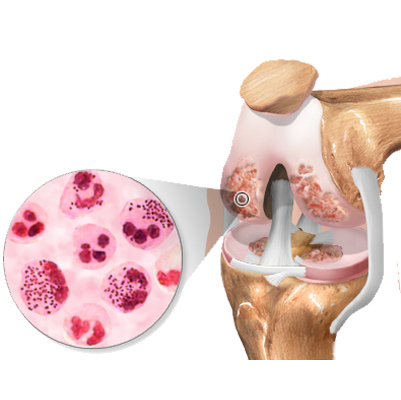
Gout
Overview
Gout is a common yet complex type of arthritis that can affect anyone.
It is caused by excess uric acid in the blood, which forms sharp uric acid crystals in the joints. These crystals trigger sudden, severe pain and inflammation, most commonly in the big toe joint.
A gout attack can occur suddenly, often waking you at night with the feeling that your toe is on fire. The affected joint becomes hot, swollen, red, and extremely tender—even the weight of a bedsheet can feel unbearable.
Symptoms of Gout
-
Intense joint pain – usually in the big toe, but can affect ankles, knees, elbows, wrists, and fingers.
-
Severe pain in first 4–12 hours after onset.
-
Lingering discomfort – pain may continue for days or weeks after an attack.
-
Recurring attacks – later episodes tend to last longer and affect more joints.
-
Inflammation & redness – swollen, warm, tender joints.
-
Limited range of motion – as gout progresses, joints become stiff and harder to move.
Effects / Complications if Untreated
-
Frequent gout attacks leading to chronic arthritis
-
Joint damage and deformities
-
Tophi (hard uric acid deposits under the skin)
-
Kidney stones due to uric acid buildup
-
Reduced quality of life because of chronic pain
Homeopathic Treatment of Gout
Homeopathy aims to:
Reduce uric acid buildup
Relieve pain and swelling during acute attacks
Prevent recurrence and long-term joint damage
Commonly Used Remedies
-
Colchicum Autumnale – classic remedy for gout, especially in the big toe with extreme tenderness.
-
Ledum Palustre – for gout that begins in the feet and ascends upward.
-
Urtica Urens – helps in eliminating excess uric acid and relieving joint swelling.
-
Benzoic Acid – for gout with offensive-smelling urine and joint stiffness.
-
Lycopodium Clavatum – when gout is associated with digestive troubles and kidney issues.
Along with medicines, lifestyle changes are crucial:
-
Avoid high-purine foods (red meat, organ meat, seafood)
-
Limit alcohol and sugary drinks
-
Stay hydrated
-
Maintain healthy body weight
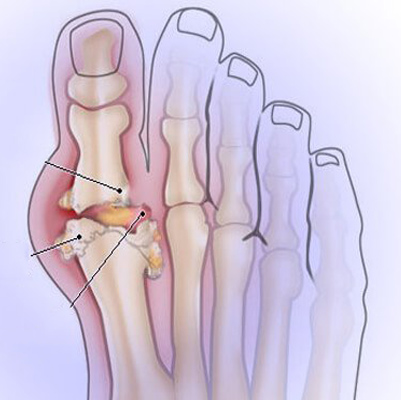
Head injuries
Head Injuries – A Silent Danger
Overview
Head injuries are very dangerous and can range from a minor bump to life-threatening brain trauma. They may cause permanent disability, memory loss, mental impairment, or even death if not treated on time.
Many people ignore mild head injuries during sports or accidents, but even small trauma can have lasting effects on brain health. Protecting yourself and your children from head injuries is very important.
Symptoms of Head Injury
-
Bleeding or bruising on the head/scalp
-
Mild to severe headache
-
Nausea, dizziness, or vomiting
-
Confusion, disorientation, or distraction
-
Short-term unconsciousness (fainting)
-
Persistent headache or memory problems
-
Severe cases: speech issues, vision problems, seizures, or personality changes
Effects if Untreated
-
Long-term brain damage
-
Memory loss or reduced concentration
-
Depression, anxiety, or mood changes
-
Permanent disability or paralysis
-
Loss of balance and coordination
-
Increased risk of seizures (post-traumatic epilepsy)
-
In severe cases, coma or death
Homeopathic Treatment for Head Injuries
Homeopathy offers safe, natural remedies that help heal the after-effects of trauma, reduce swelling, and support brain recovery.
-
Arnica Montana – For shock, bruising, and bleeding after head injury
-
Natrum Sulphuricum – For mental dullness, depression, or headaches after concussion
-
Cicuta Virosa – For convulsions or seizures post head injury
-
Helleborus Niger – For confusion, slow responses, memory loss after trauma
-
Belladonna – For sudden, violent headaches with sensitivity to light/sound
Why Spaks Homeopathy?
-
Root-cause healing of trauma aftereffects
-
Prevents long-term complications naturally
-
Gentle, safe & side-effect free medicines
-
Expertise in Neurological, Mental & Chronic Disorders
Address: E-38, Budh Vihar, Badarpur, New Delhi – 110044
Phone: +91 8700458818
Email: info@spakshomeopathy.com
Spaks Homeopathy – Healing Beyond Injuries, Restoring Life Naturally!
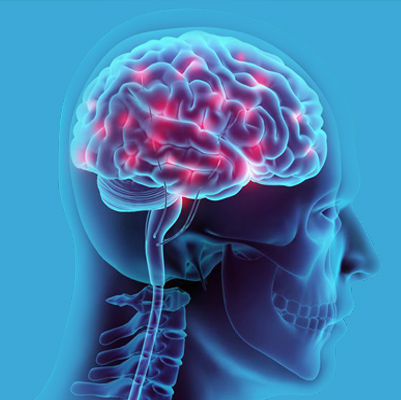
Head Pain
Headache – More Than Just Pain
Overview
Headache is one of the most common health issues people experience. It is usually described as a dull or tight band-like pain around the head.
The most frequent type is Tension Headache, but other forms include Migraine and Sinus Headache.
-
Migraines – Throbbing pain (often one-sided) with nausea, vomiting, and sensitivity to light/sound.
-
Sinus Headaches – Deep, steady pain behind the face/forehead, worsens on bending forward, usually with nasal congestion.
-
Tension Headaches – Dull, constant pain like a tight band across the head, often linked with stress or fatigue.
Symptoms of Headache
-
Dull, aching head pain
-
Headache upon awakening
-
Chronic fatigue & irritability
-
Difficulty falling or staying asleep
-
Tenderness in scalp, neck, or shoulder muscles
-
Disturbed concentration
-
Mild sensitivity to light or noise
Effects if Untreated
-
Recurring and chronic headaches
-
Stress, anxiety, and depression
-
Reduced work performance & productivity
-
Sleep disturbances leading to fatigue
-
Risk of severe migraines or neurological issues
-
Emotional imbalance and irritability
Homeopathic Treatment for Headaches
Homeopathy focuses on the root cause of headaches – whether stress, sinus, hormonal imbalance, or digestive issues – and provides safe, long-term relief.
Common Homeopathic Remedies:
-
Belladonna – Sudden, throbbing headaches with sensitivity to light/noise
-
Glonoinum – Severe, congestive headaches with heat and redness
-
Natrum Muriaticum – Migraine headaches triggered by stress, grief, or sun exposure
-
Bryonia Alba – Headaches worse from movement, better with rest
-
Nux Vomica – Headaches due to stress, late nights, or digestive troubles
-
Spigelia – Severe left-sided headaches with stabbing pain
Why Choose Spaks Homeopathy?
-
Root-cause healing, not just temporary relief
-
Gentle, safe & non-habit forming treatment
-
Personalized medicines for each patient
-
Expertise in Headaches, Migraines, Neurological & Chronic Disorders
Address: E-38, Budh Vihar, Badarpur, New Delhi – 110044
Phone: +91 8700458818
Email: info@spakshomeopathy.com
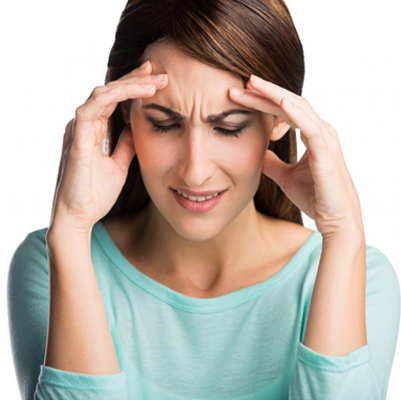
Heel Pain
Effects if Untreated
If heel pain is ignored or left untreated, it may lead to:
-
Chronic, persistent pain making walking difficult
-
Swelling and stiffness in the heel or arch
-
Difficulty standing for long hours
-
Change in walking style (limping), which may cause knee, hip, or back pain
-
Increased risk of plantar fascia tear or long-term tendon damage
Homeopathic Treatment for Heel Pain
Homeopathy focuses on the root cause, reduces inflammation, and promotes natural healing without side effects.
Benefits of Homeopathic Treatment:
-
Relieves pain and swelling in the heel
-
Helps repair injured tendons and ligaments
-
Improves flexibility and mobility
-
Prevents recurrence by strengthening weak tissues
-
Safe, natural, and free from harmful chemicals
Commonly Prescribed Homeopathic Medicines* (after detailed case study):
-
Calcarea Fluorica – For heel spurs, stiffness, and sharp pain on walking
-
Rhus Toxicodendron – For pain that improves with movement but worsens after rest
-
Arnica Montana – For heel pain after injury, overuse, or strain
-
Pulsatilla – For shifting heel pains, worse in the evening
-
Silicea – For chronic heel pain with weakness and tenderness
(Medicine selection should always be individualized by a qualified homeopath.)
Spaks Homeopathy – Heal naturally, walk pain-free, and restore your active lifestyle.
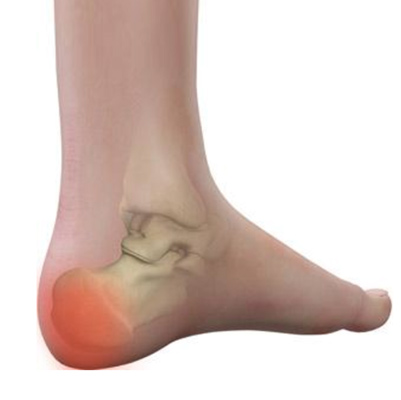
Hip Pain
Overview
Hip pain is more common in women than men and occurs most frequently in women between the ages of 40 and 60 years. It can result from injury, overuse, or underlying health conditions.
The exact location of the pain often provides clues to its cause:
-
Pain inside the hip or groin usually suggests issues within the hip joint itself (such as osteoarthritis, arthritis, or labral tears).
-
Pain on the outer hip, thigh, or buttock is often due to problems with the surrounding muscles, ligaments, tendons, or bursae (inflammation of the fluid-filled sacs that cushion the joint).
Hip pain may be mild or severe, short-term or chronic, and can interfere with walking, daily activities, and sleep.
Symptoms
Common symptoms of hip pain include:
-
Limping while walking
-
Pain in the hip joint
-
Groin pain
-
Stiffness or reduced range of motion in the hip
-
Swelling around the hip
-
Tenderness on touching the hip area
-
Difficulty sleeping on the affected side
Effects
-
Limited mobility affecting daily activities such as walking, climbing stairs, or bending
-
Sleep disturbances due to night-time pain
-
Risk of chronic disability if left untreated
-
Possible development of secondary joint problems (back or knee pain) due to altered walking pattern
Treatment
1. Conventional Treatment
-
Pain relievers: Over-the-counter medications such as ibuprofen or acetaminophen to reduce pain and inflammation
-
Physical therapy: Stretching and strengthening exercises to improve joint function
-
Corticosteroid injections: For severe inflammation (such as bursitis or arthritis)
-
Surgery: In advanced cases (hip replacement or repair of joint damage)
2. Home Remedies & Lifestyle Care
-
Apply ice packs to reduce swelling and pain after activity
-
Use heat therapy to ease stiffness
-
Maintain a healthy weight to reduce strain on the hip joint
-
Avoid prolonged sitting or standing in one position
-
Use supportive pillows while sleeping to reduce nighttime hip pain
3. Preventive Tips
-
Warm up before exercise and avoid sudden, intense movements
-
Wear supportive shoes
-
Practice low-impact exercises like swimming, cycling, or yoga
-
Strengthen core and hip muscles to protect the joint
4. Homeopathic Supportive Treatment (under professional guidance)
-
Arnica montana – for hip pain due to injury or overuse
-
Bryonia alba – when pain worsens with movement and improves with rest
-
Rhus toxicodendron – for stiffness and pain that improves with gentle movement
-
Calcarea carbonica – for chronic hip pain, especially in overweight individuals
Key Point: Hip pain can usually be managed with lifestyle changes, exercise, and appropriate treatment. However, persistent or severe pain should be evaluated by a doctor to rule out arthritis or serious joint conditions.
